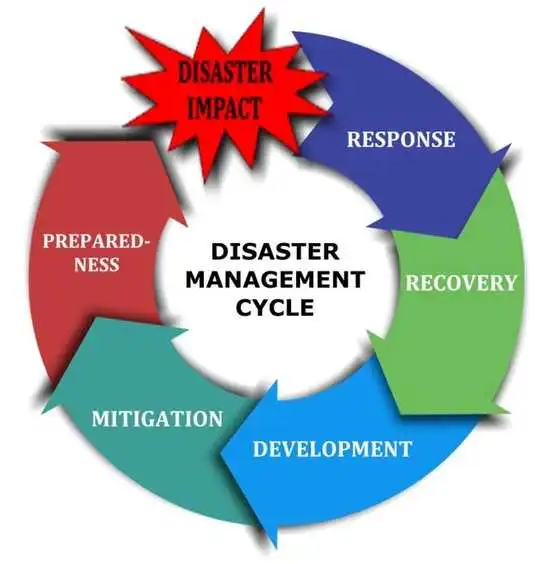Natural disasters cause immense destruction, affecting lives and costing homeowners billions in damages annually. Taking proactive steps to protect your family and home before a disaster strike can significantly reduce your losses. Globally, climate-related disasters are increasing. In 2022 alone, 308 climate-related disasters were recorded, surpassing the annual average (16 droughts, 147 floods, and 100 storms) from the previous 30 years (1992-2021). As these events become more destructive and common, disaster preparedness is critical.
While the specific natural disasters you face will vary by region, taking proactive steps to prepare your home can drastically reduce risks and protect your family. This guide offers practical and comprehensive resources to help you fortify your home against natural disasters.
Disaster-Specific Home Preparation Tips
Here’s how to prepare your home based on the threats you might face:
Hurricanes and Tornadoes
These powerful wind events demand serious fortification to protect your home.
- Reinforce your windows and doors: Strengthening these entry points is crucial, while plywood offers temporary solutions, storm shutters provide better defense. For optimal protection, consider impact-resistant windows and doors to eliminate last-minute preparations. Remember to include reinforced garage doors, as they are often vulnerable points during high winds.
- Ensure you have proper insurance coverage, specifically for wind and flood damage, as many standard policies don’t cover these.
- Secure outdoor items like patio furniture, trash cans, potted plants, and other loose objects that could become projectiles in strong winds.
- Invest in a power generator and store fuel safely to maintain power during outages.
- Keep storm drains clear around your property to prevent localized flooding.
- Know your community’s evacuation plan and routes well in advance.
- Consider building a safe room in your home or basement for shelter.
- Fix, fortify, seal, or strap your roof to resist uplift caused by high winds, as roof damage can lead to further interior destruction.
Floods
- Move valuables and furniture to the top floor or the highest possible elevation to prevent damage.
- Seal basement walls with waterproof compounds to prevent water seepage.
- Elevate appliances at least 12 inches above potential flood levels to protect them.
- Install backflow valves that block sewage from flowing backward into your home through drains.
- Use sandbags: When flooding threatens, place sandbags in a staggered pattern around doors and openings. Stack them at least 1 foot high and extend 6 inches beyond doorways to block water effectively.
Earthquakes
Securing your home’s interior is vital in earthquake zones to prevent injuries and damage from shaking.
- Anchor heavy furniture and appliances to the walls using fasteners like brackets. Items such as China cabinets, bookshelves, refrigerators, and furnaces can pose a significant risk of injury and property damage if they topple.
- Strap your water heater to avoid fire hazards from broken gas lines.
- Store breakable items on lower shelves to prevent them from falling and shattering.
- Repair any cracks in the foundation and fix defective wiring to prevent further structural or electrical hazards.
- Consider bolting your house to its foundation for increased stability during tremors.
- Use flexible connections on gas and water lines to minimize breaks during shaking.
- Know how to shut off your gas and electricity at the main source to prevent fires and gas leaks.
Thunderstorms and Hailstorms
Protect your electronics and exterior from the impacts of severe storms.
- Get a lightning surge protector to safeguard computers and other electronic devices from power surges.
- Install screens around your air-conditioning unit to protect its delicate fins from hail damage.
- Install impact-resistant windows and doors for superior protection against hail and flying debris.
- Consider replacing an old roof with an impact-resistant one for better durability against hail.
Wildfires
Creating a defensible space around your home is crucial for wildfire protection.
- Use fire-resistant materials when building a new home or renovating an existing one. Options like concrete, stucco, brick, fiber cement, gypsum, and tempered glass can significantly enhance your home’s safety.
- Have a hose long enough to reach around the entire house for immediate fire suppression.
- Hang heat-resistant curtains on windows to block radiant heat.
- Install dual-paned tempered glass windows for increased heat resistance.
- Cover attic vents and chimneys with 1/8-inch wire mesh to keep embers and debris from entering.
- Create a defensible space around your house by clearing brush, dead foliage, and other flammable materials to keep fire away from your structure.

Important To-Dos for Disaster Readiness
During a natural disaster, everyday items can quickly become dangerous hazards. As part of your disaster preparedness, here are some other crucial steps to take:
- Unplug appliances and turn off propane tanks. This helps prevent fires and other hazards if power is restored unexpectedly or tanks are damaged.
- Repair defective electrical wiring, leaky gas connections, and cracks in foundations or ceilings. Addressing these issues beforehand prevents them from becoming major dangers during an event.
- Hang framed pictures and mirrors away from sitting and sleeping areas. This reduces the risk of injury from falling glass or frames.
- Store weed killers, pesticides, and other flammable products away from heat sources. This minimizes fire risks.
- Keep your roof, awnings, and gutters clean from debris. Clear gutters ensure proper drainage, preventing water damage during heavy rains.
- Digitize or make hard copies of important documents and store them in fireproof containers. This protects vital records like insurance policies, birth certificates, and deeds from loss.
- Maintain your swimming pool and/or cistern and keep it filled. A full pool or cistern can be a valuable water source for firefighting or other emergency needs.
Conclusion
By taking steps to prepare, you can significantly reduce the fear, anxiety, and losses that accompany disasters. Preparedness not only helps lessen the overall impact of these events but can sometimes even help you avoid danger entirely.








